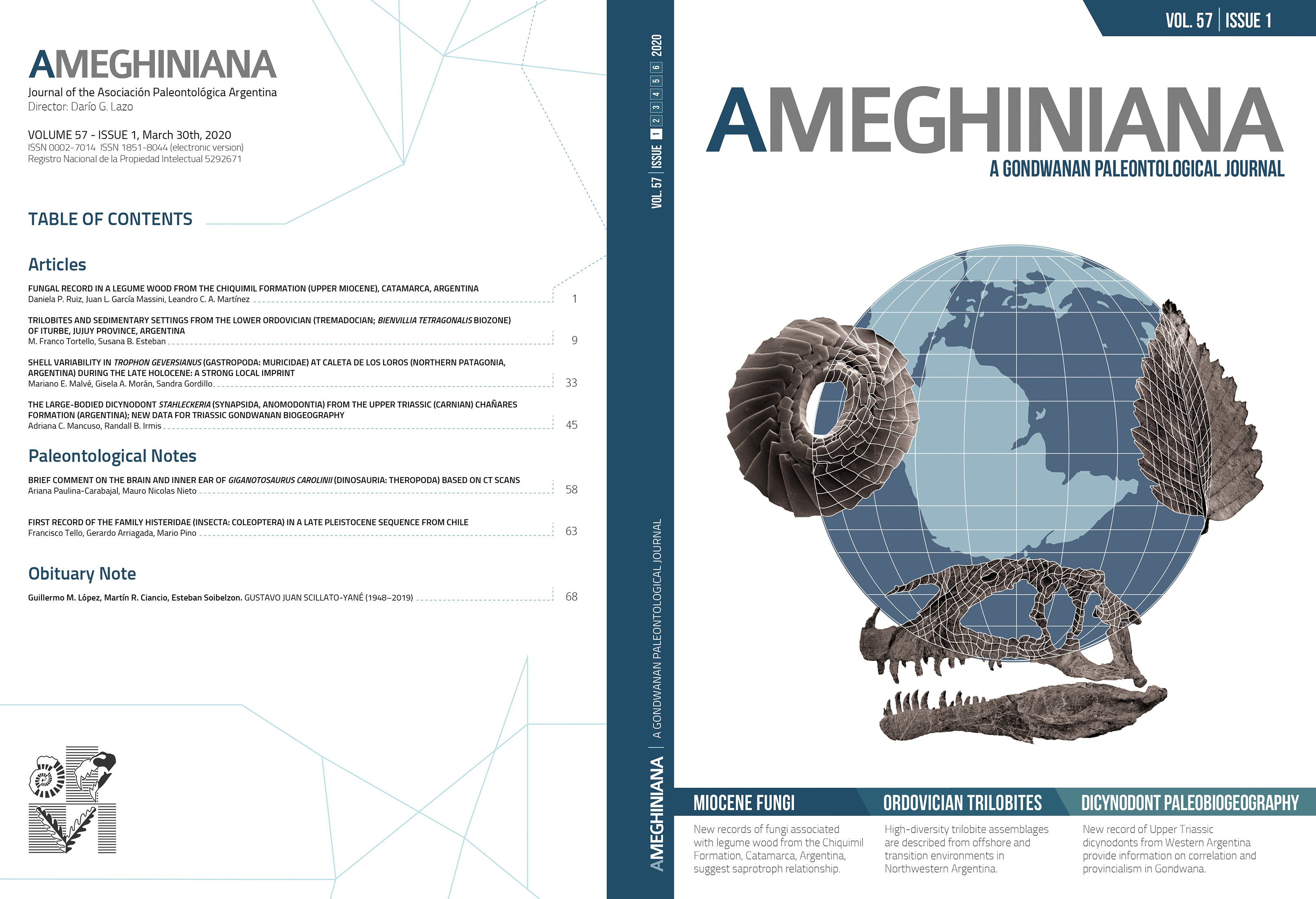A LARGE-BODIED STAHLECKERIINE DICYNODONT (SYNAPSIDA, ANOMODONTIA) FROM THE UPPER TRIASSIC (CARNIAN) CHAÑARES FORMATION (ARGENTINA); NEW DATA FOR TRIASSIC GONDWANAN BIOGEOGRAPHY
DOI:
https://doi.org/10.5710/AMGH.20.12.2019.3302Keywords:
Ischigualasto-Villa Unión Basin. Argentina. Dicynodont. Continental CorrelationAbstract
The non-marine Triassic displays distinct regional differences in tetrapod fossil assemblages even in adjacent regions, and these patterns have been hypothesized to reflect provincialism. For example, in the “Middle Triassic” of Gondwana, the Río Seco de la Quebrada Formation (Puesto Viejo Group) in western Argentina shares a number of taxa with the Cynognathus AZ of the Burgersdorp Formation (Karoo Basin) in South Africa. In contrast, the nearby Chañares Formation of northwestern Argentina is compositionally distinct and shows more affinities with the Dinodontosaurus AZ of the lower Santa Maria Formation in southern Brazil and the top of the upper Omingonde Formation of Namibia. These problems are exacerbated by recent radioisotopic dates from the Chañares Formation and the Puesto Viejo Group that suggest these units are actually Carnian in age. We provide new data for the biostratigraphy and biogeography of these units in the form of the first record of a stahleckeriine dicynodont from the Chañares Formation, an ulna referable to Stahleckeria. This new occurrence strengthens the correlation between Chañares, Santa Maria, and the top of Omingonde units but reinforces the differences with the Río Seco de la Quebrada and Burgersdorp units. Hypotheses for this provincialism include assemblages of different ages, distinct environments controlled by paleolatitude or paleotopography between basins that formed a barrier to faunal interchange.Downloads
Published
Issue
Section
License
Authors publishing in Ameghiniana have the option of making their article freely available online. Authors opting for the Open Access must pay a fee of $300 (US dollars) to cover article-processing costs and to ensure the article is made open access. Please contact the Production Team after the acceptance of your manuscript if you are interested in making your article Open Access. This option implies by default a license Creative Commons Attribution Non-Commercial-NoDerivs License (CC BY NC ND). If your funding institution requires a different licensing option please communicate this to the Production Team after the acceptance of your manusctipt.











